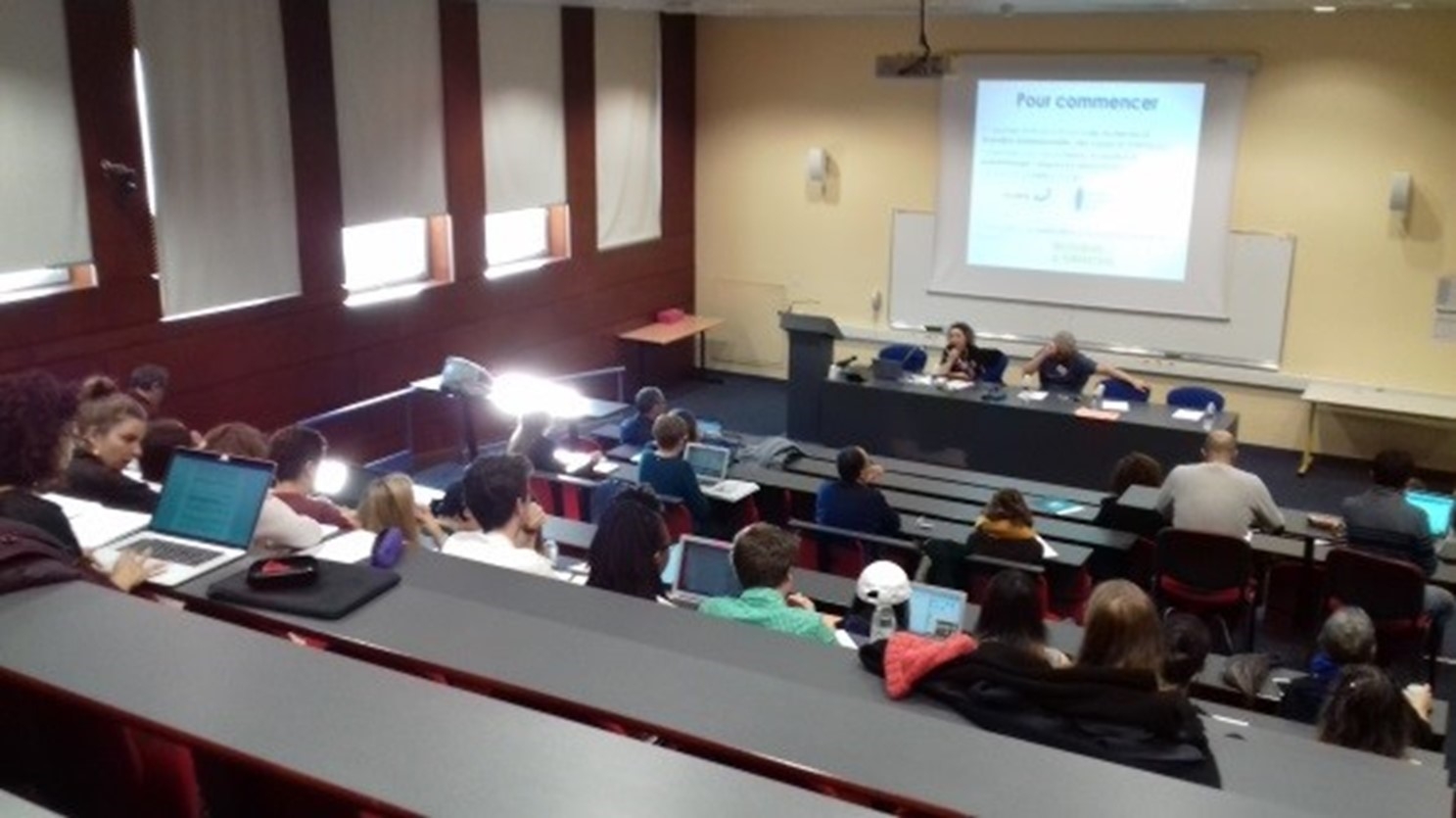Since joining CLARIN as an observer, a number of activities have been organised to help French researchers understand what CLARIN can do for them. On 16 November 2018, the CA2LI research team of the CLARIN-FR member 'Laboratoire de Recherche sur le Langage' hosted a study day entitled ‘Lier recherche et formation professionnelle: des corpus à l'interface’ (Corpora at the Interface between Research and Vocational Training) at the Maison des Sciences de l’Homme, Université Clermont Auvergne (France). The main goal was to bring together researchers, trainers, and practitioners in the fields of language sciences, education, and healthcare to discuss ways in which multi-modal research corpora can be exploited from a pedagogical perspective for vocational training.
The idea for a study day started from the initial observation that although corpus-based and corpus-driven research has a long tradition in France, the use of corpora for the training of practitioners and professionals in the fields of education, language sciences, and healthcare is still not well documented. Indeed, too often the link between research and vocational training is reduced to the simple idea of knowledge transmission and is not considered in terms of appropriation of these research 'products’ (corpora) by professionals.
The study day was held in France and was attended by around fifty participants. Half of them were researchers from the fields of language sciences, education, and healthcare, while the other half constituted students from different master’s programmes.

The meeting was structured around a certain number of questions regarding the possible links between research and vocational training and the technicality of the tools. Speakers at the meeting talked about which training objects can be built from the corpora and how such corpora and linguistic tools available through CLARIN-FR nodes such as ORTOLANG can be appropriated by both trainers and learners. The exchanges during the day showed, on the one hand, the relevance and transversal nature of these questions and, on the other hand, the effectiveness of the use of corpora in certain areas of vocational training, such as speech therapy and foreign language teaching. However, in certain fields, the needs for training corpora are not always clearly identified. Better knowledge of these needs, stemming from the end users, would make it possible to guide the collection, processing, and transformation of research corpora into training objects accompanied by guided pedagogical scenarios.
The interdisciplinary nature of the study day made it possible to envisage future collaborations between researchers for the development of training corpora guided by best practices seen and discussed during the presentations. In addition, the Master's students who participated became aware of the interactions between research and training and of the possible contributions of interdisciplinary approaches while acquiring knowledge to complement their current training.
During this event, a presentation of the CLARIN infrastructure was done by Michel Jacobson from Huma-num, the French coordinating institution for CLARIN. This presentation was intended to present the CLARIN infrastructure to participants, but also the organisation of the French consortium based on the duopoly 'Huma-Num & CORLI'. An emphasis was placed on the tools and resources made available by CLARIN; for instance, Michel showed how the Virtual Language Observatory can be used to identify resources pertaining to the French Sign Language. The presentation also illustrated the use of the Language Resource Switchboard to explore and analyse language data and the French corpora in the , which appeared to be a good entry point for the French research community and in tune with the theme of the conference. Demonstration were made using 'Voyant Tools', 'UDPipe' and 'Weblicht' on the French VLO resources.